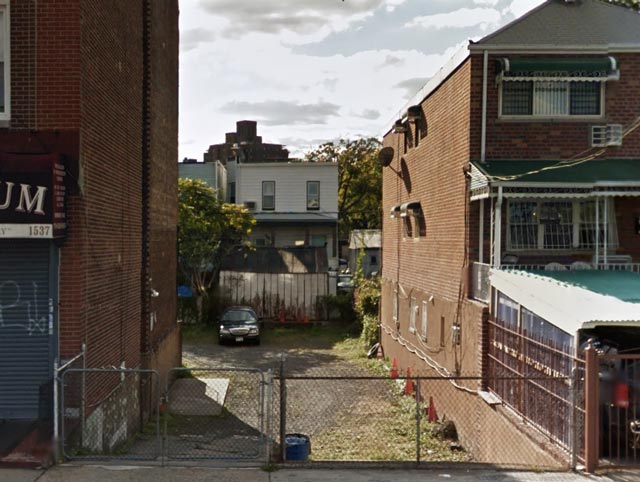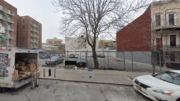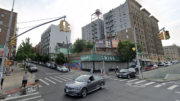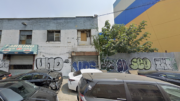Earlier today, YIMBY wrote about a large affordable housing development in East Tremont. While subsidized, non-profit housing has come to define new construction in the Bronx in recent years, New York City’s most affordable borough is also home to plenty of smaller – but no less necessary – market-rate projects.
One of these is likely to be 1539 Castle Hill Avenue, on the border between the Parkchester and Westchester Square sections of the East Bronx. Yesterday, permits were filed for a new eight-unit, four-story residential building, totaling 8,573 square feet.
As with most development in the Bronx, the project is a local affair. The developer, Tonin Lumaj, listed an address in the Albanian-heavy Morris Park neighborhood, while Fred Geremia Architects & Planners works in Pelham, New York, in an office just a few miles north of the Bronx.
While small builders in the Bronx generally won’t touch the more liberally-zoned lots in the poorer South Bronx, they are more than eager to built in the northern half of the borough, which tends more towards middle-class.
After decades of being spurned by developers, the Bronx should be grateful for this sort of market-rate construction, which will be built without the direct subsidies required for affordable housing projects. These buildings may not win any design awards, but more affordable market-rate development in the outer boroughs offers the best long-term hope for housing the city’s squeezed middle class. (Not to mention opportunities for lower-income housing in the future, as apartments filter down to poorer tenants, and apartments built for the middle-class filter down to the poor much faster than those built for the rich.)
Unfortunately, the city has grown hostile to small-scale infill redevelopments like 1539 Castle Hill Avenue, and has sought to stamp them out.
During Bloomberg’s twelve years in office, the Department of City Planning, headed by Amanda Burden, systematically downzoned single-family neighborhoods that were ripe for redevelopment. This lot, on the western side of Castle Hill Avenue, was spared; would-be builders just to the east were not so lucky.
There, in Westchester Square, the redevelopment of single- and two-family homes into small apartment buildings was forbidden. Fairly generous R6 zones were given more restrictive designations, and developers were essentially told to either build larger projects on the main avenues – a much harder task given the difficulty in finding financing for market-rate projects aimed at the middle-class – or leave. The rezoning was typical of those in the northern Bronx during the supposedly pro-development Bloomberg years, and was echoed in neighborhoods from Throgs Neck to Woodlawn.
The Department of City Planning wrote that the rezoning of Westchester Square, passed in 2006, would “better reflect the scale and character of the Westchester Square neighborhood and ensure that future development fits the prevailing neighborhood context.” But another way of looking at it is that it forbids exactly the type of incremental, small-scale growth that built New York City’s most beloved outer-borough neighborhoods in the first place.
Talk about this topic on the YIMBY Forums
For any questions, comments, or feedback, email newyorkyimby@gmail.com
Subscribe to YIMBY’s daily e-mail
Follow YIMBYgram for real-time photo updates
Like YIMBY on Facebook
Follow YIMBY’s Twitter for the latest in YIMBYnews






